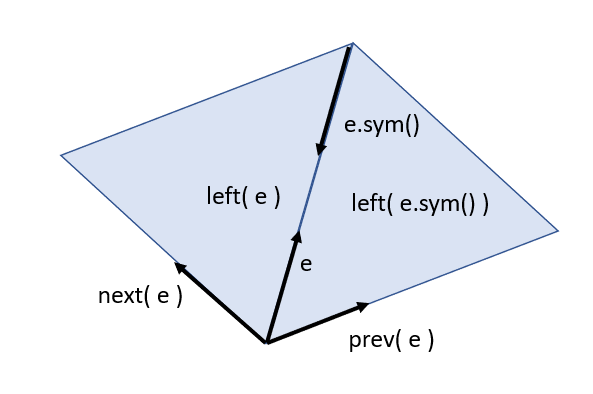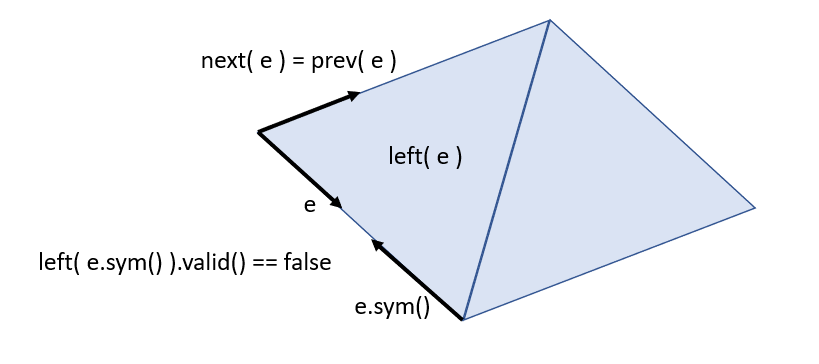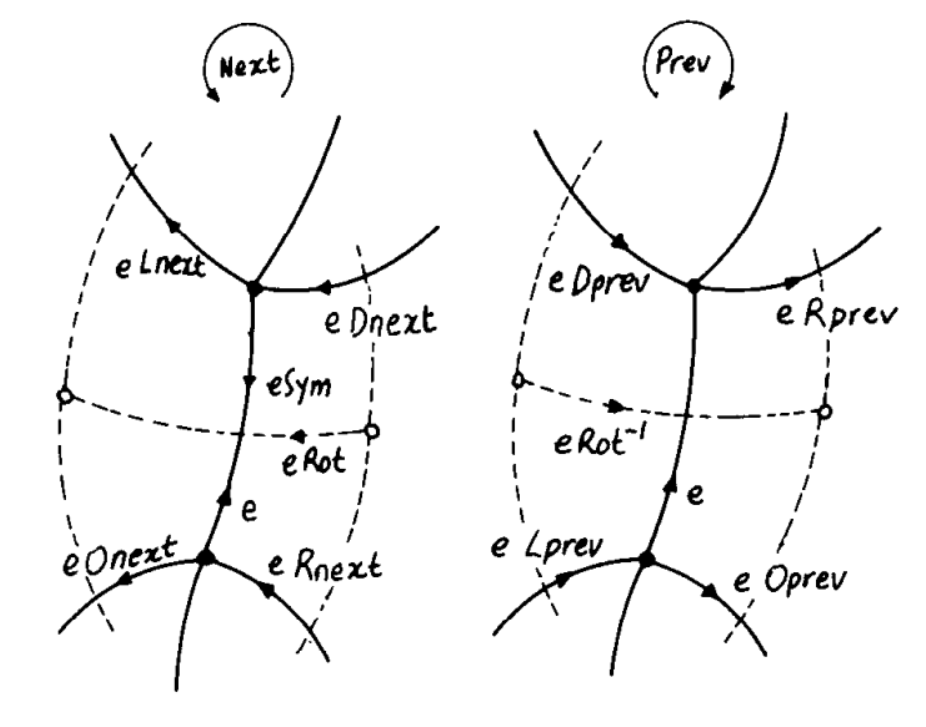In MeshLib Mesh structure consists of two major parts:
Is ordered array of (x,y,z) values for each point (vertex) indexed by VertId (integer value that indicates vertex position in the array)
Topology in Meshlib is represented as "Half-Edge structure" which means that core primitives are "Half-Edges".
"Half-Edges" are called "Half" because a pair of half edges represent one "Oriented Edge" (one for origin vertex and left face, and the other for destination vertex and right face)
MeshTopology consists of 3 major parts:
FaceId stores one EdgeId with this FaceId to the left)VertId stores one EdgeId with this VertId origin)Each "Half-Edge" has 4 attributes:
VertIdFaceIdAlso there is the opposite "Half-Edge" which can be described as "The Other Half". For example "Oriented Edge" can be considered as a vector from the "Half-Edge" origin vertex to "Other Half" origin vertex.
Each "Half-Edge" is indexed by its unique EdgeId "The Other Half" also have unique EdgeId which is always equal to "Half-Edge" XOR 1

EdgeId e = ... is unique identifier of an oriented edge in mesh ("Half-Edge").
e.sym() - the same edge with opposite orientation ("The Other Half").
MeshTopology::next( e ) - next in counter-clockwise direction edge from the same origin-ring (Next "Half-Edge").
MeshTopology::prev( e ) - previous in counter-clockwise direction edge from the same origin-ring (Prev "Half-Edge").
MeshTopology::left( e ) - returns the identifier of the face to the left of e. Invalid returned ID means the presence of hole to the left of e (Left FaceId).
MeshTopology::right( e ) - returns the identifier of the face to the right of e. Invalid returned ID means the presence of hole to the right of e (Left FaceId of "The Other Half").
MeshTopology::org( e ) - returns the identifier of the vertex in the origin of e. It is assumed that all edges either have valid vertices on the ends, or "lone" (not connected to the mesh) (Origin VertId).
MeshTopology::dest( e ) - returns the identifier of the vertex in the destination of e. It is assumed that all edges either have valid vertices on the ends, or "lone" (not connected to the mesh) (Origin VertId of "The Other Half").


Find more advanced mesh navigation techniques in this discussion
In general any closed loop of edges may have a single face, but in meshlib we fully support only triangular faces which means that all faces can have strictly 3 edges and 3 vertices incident to it (Mesh structure allows having non-triangular faces but not all algorithms can work with it).
In this paper one can find commonly used mesh structures including "Half-Edge" structure on 18th slide.
In this paper, one can find description of more advanced "Quad-Edge" structure, please find some basic edge functions mapping bellow:

| Quad-Edge paper | MeshLib |
|---|---|
eSym | e.sym() |
eOnext | topology.next(e) |
eOprev | topology.prev(e) |
eDnext | topology.next(e.sym()).sym() |
eDprev | topology.prev(e.sym()).sym() |
eLnext | topology.prev( mE.sym() ) |
eLprev | topology.next( mE ).sym() |
eRnext | topology.prev( mE ).sym() |
eRprev | topology.next( mE.sym() ) |